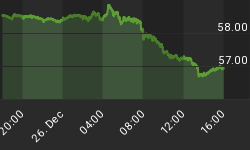As we move into the second half of 2014, the Federal Reserve has continued to reduce its stimulus measures intended to boost the U.S. economy. Just last week we heard rumors from Fed officials that if the job market improves faster than expected, key interest rates may be increased sooner than expected.

While the Fed is gradually reducing stimulus measures in the U.S., other areas of the world are embarking on new monetary stimulus measures. More than ever before, we are feeling the impact of the global economy, with monetary stimulus programs in Europe and Japan taking pressure off of the Fed, and ultimately contributing to the bond market rally we have seen so far this year. The European Central Bank (ECB) recently cut its rates to negative on worries of deflation and on the possibility of slower or no growth in the eurozone.
I sat down with Director of Research John Derrick, who also manages our Near-Term Tax Free Fund (NEARX), to get his thoughts on interest rates, the bond market and what investors should pay attention to as we move into the second quarter of 2014.
After hearing what the Fed officials said on interest rates last week, what is your outlook?
There are a lot of Fed officials with their own opinions, but I think it's important to focus on what the Fed Chairman is saying. Janet Yellen said that rates are not going up, and although we've seen steady labor market improvements, it hasn't been anything dramatic. For these reasons, I think an interest rate increase is still at least a year away.
How will this affect the municipal bond market?
Each time the Fed has announced tapering measures, investors have been fearful. If you look back at each of these instances though, whenever the Fed took stimulus away, the market rallied due to fear of economic slowing. We did see a solid rally in the bond market during the first half of this year. I think interest rate increases are far enough away to still have a constructive position within the bond market, so to me the outlook is positive moving towards 2015.
How can investors take advantage of municipal-bond benefits?
On a tax-adjusted basis, municipal bonds have a very compelling risk-reward profile, which means the risk-adjusted returns are high. To take advantage of this, I would encourage investors to add exposure to their portfolio by investing in a product that holds high-quality, traditional municipal bonds. These are the type of bonds we look for and hold within the Near-Term Tax Free Fund. Our fund is in the "sweet spot" you could say; not too long, not too short, with some interest rate risk, but manageable for most investors. NEARX has generated consistent, positive annual returns and has been run by the same portfolio manager for 15 years.

For investors that like to sleep well at night, I think the fund is an attractive way to gain exposure to muni bonds. This is not the type of fund where you are going to be surprised with an unusual credit event that causes a significant impact. When choosing investments for the fund, I have a buy and hold mentality, letting the investments benefit the fund over time. The turnover of NEARX is very low and it has performed very well against its peers; take a look at the recent performance. Additionally, the fund seeks preservation of capital, and has a floating $2 NAV that has demonstrated minimal fluctuation in its share price.
How has the situation in Puerto Rico spooked the bond market?
Puerto Rican municipals are an area of the market that nobody really thought could declare bankruptcy, so what happened there didn't help investors' views of the muni market. We still have a small exposure to Puerto Rico within our fund. Our Puerto Rican positions are insured however, which is important to help mitigate the risk aspect in this type of investing.
Our Near-Term Tax Free Fund has an overall Morningstar rating of 4 stars*. The fund is very diversified and invests in municipal bonds with relatively short maturities, seeking to provide tax-free monthly income. If you're looking to add tax-free bonds to your portfolio, with the option of modest allocation to this area of the market, I encourage you to request an information packet and take a closer look.
*Morningstar Overall Rating™ among 163 Municipal National Short funds as of 06/30/2014 based on risk-adjusted return.
















